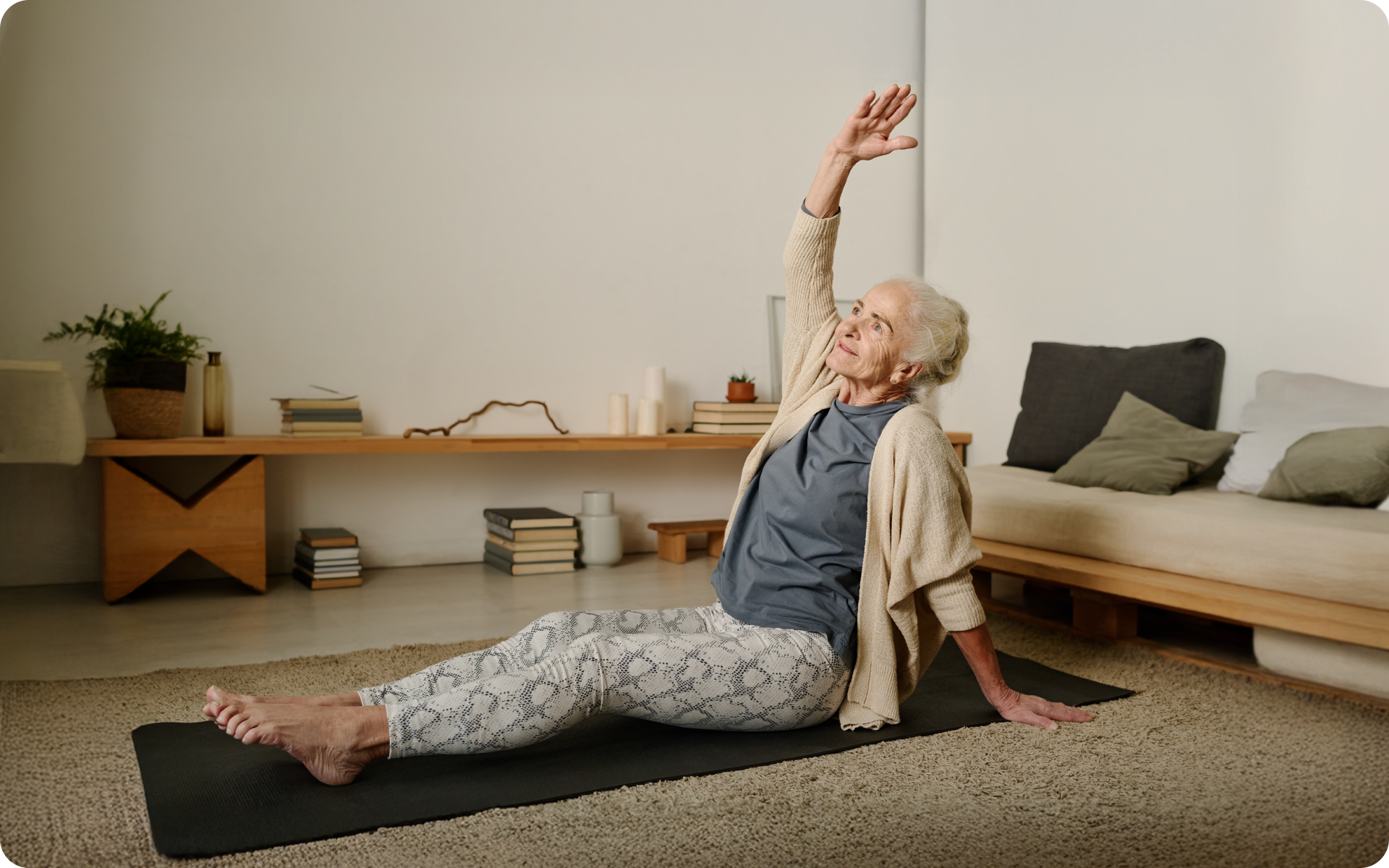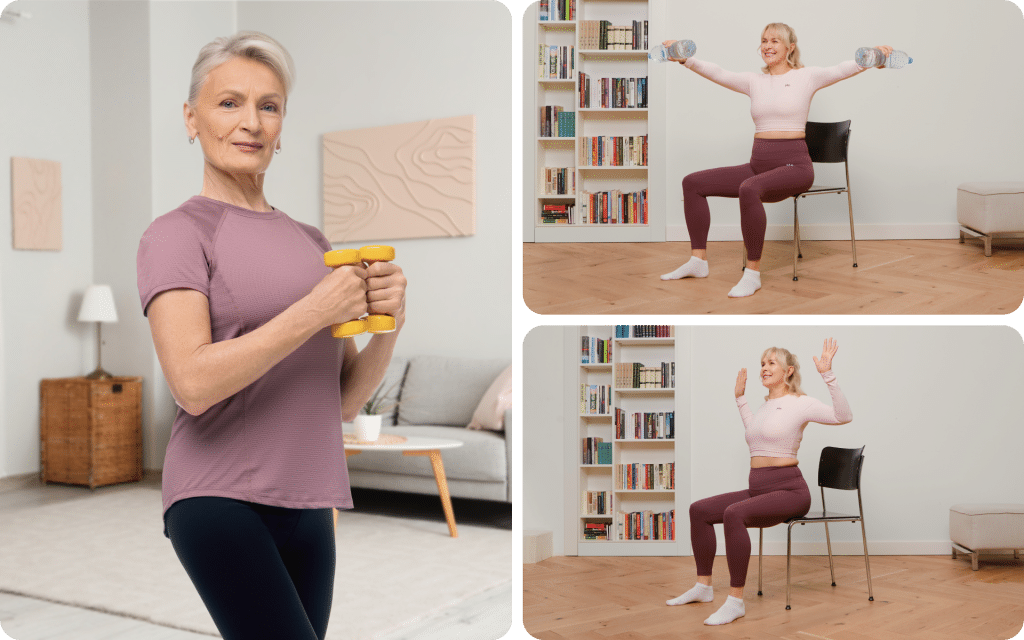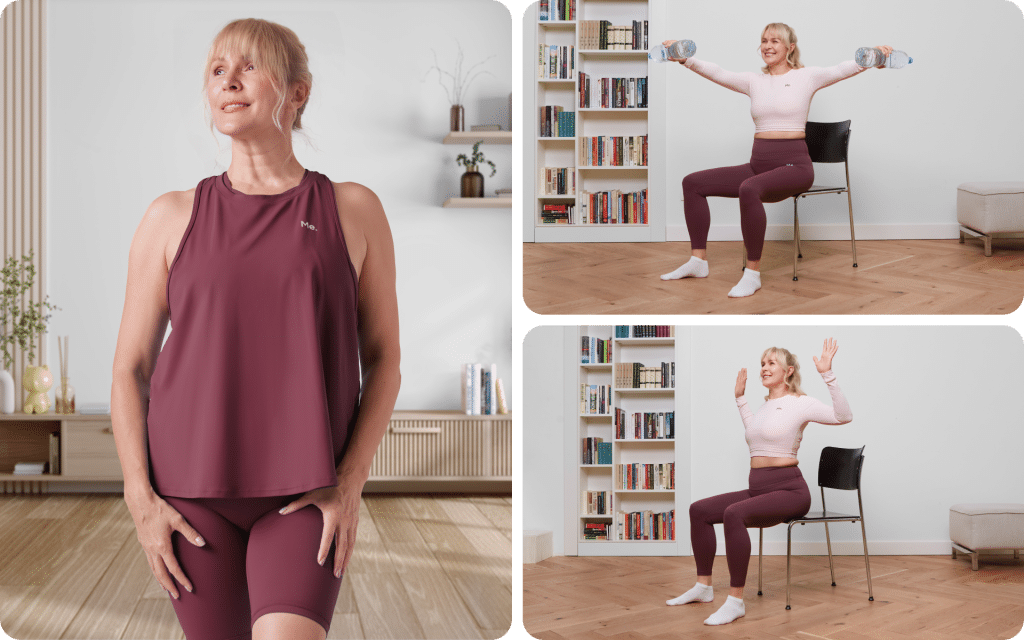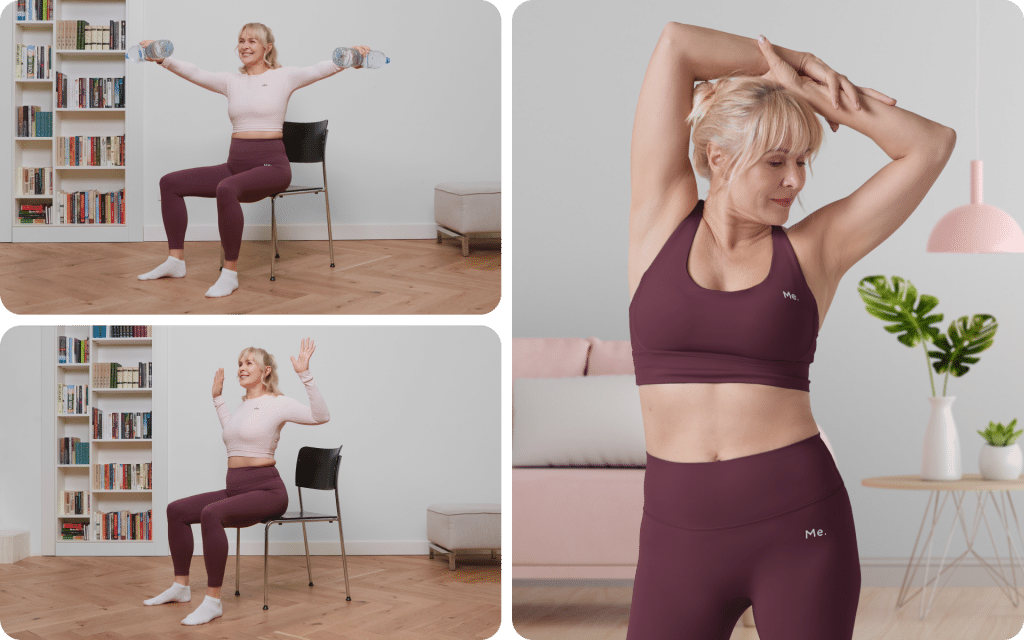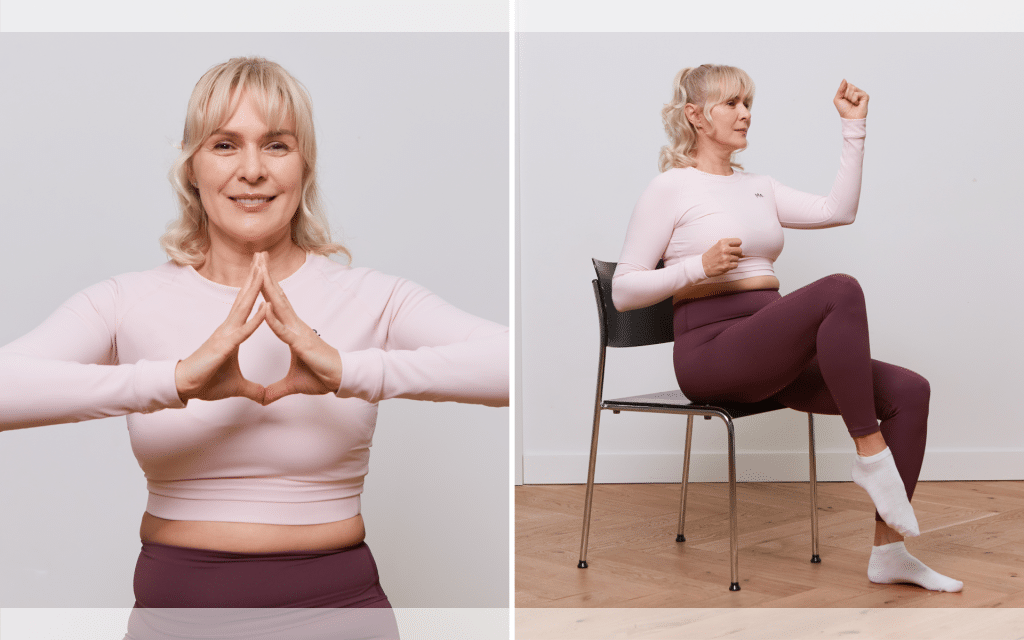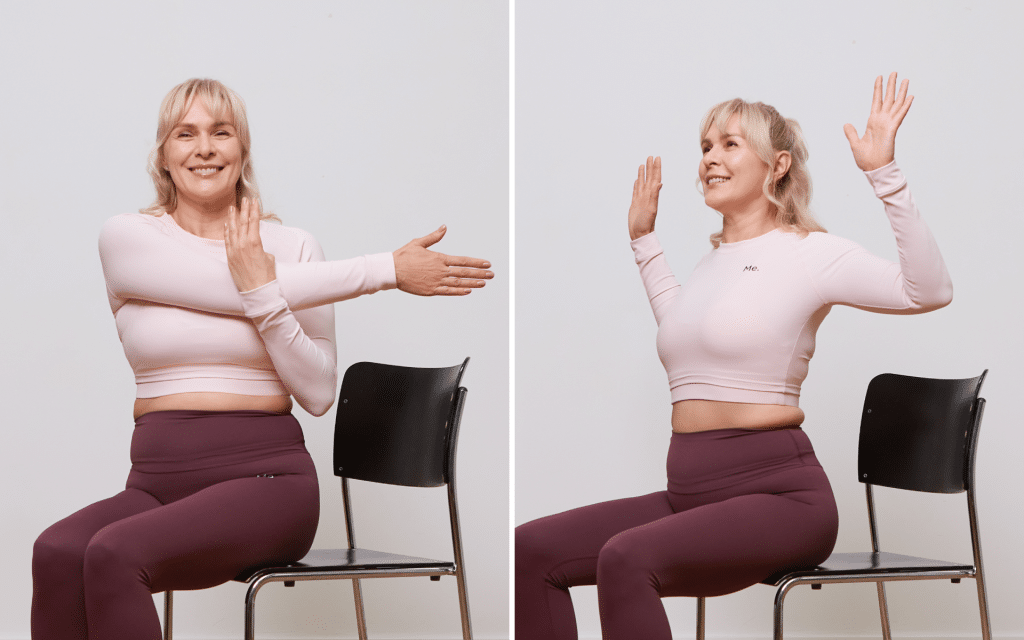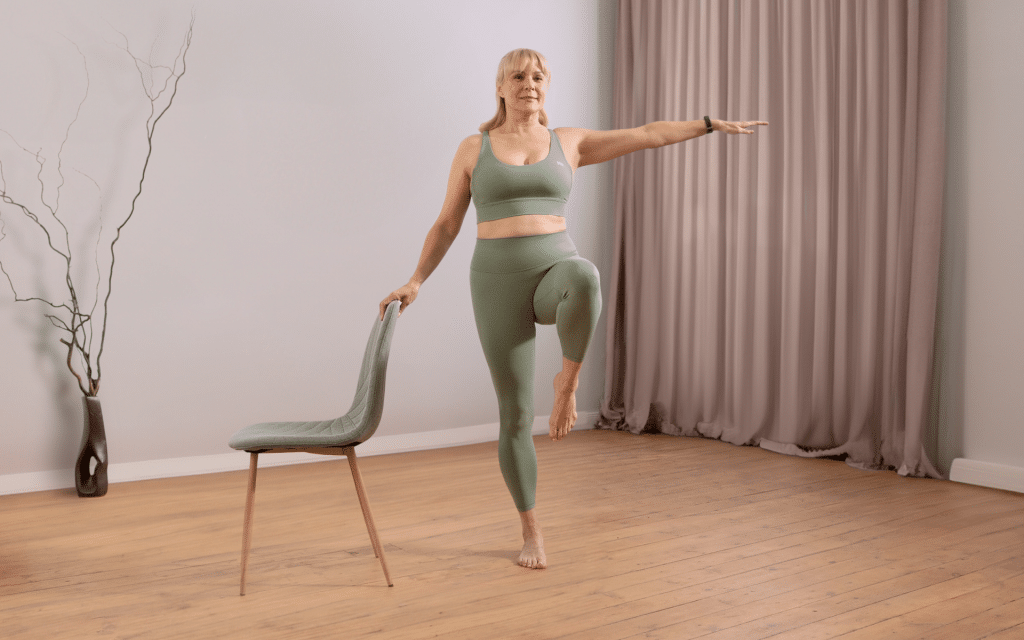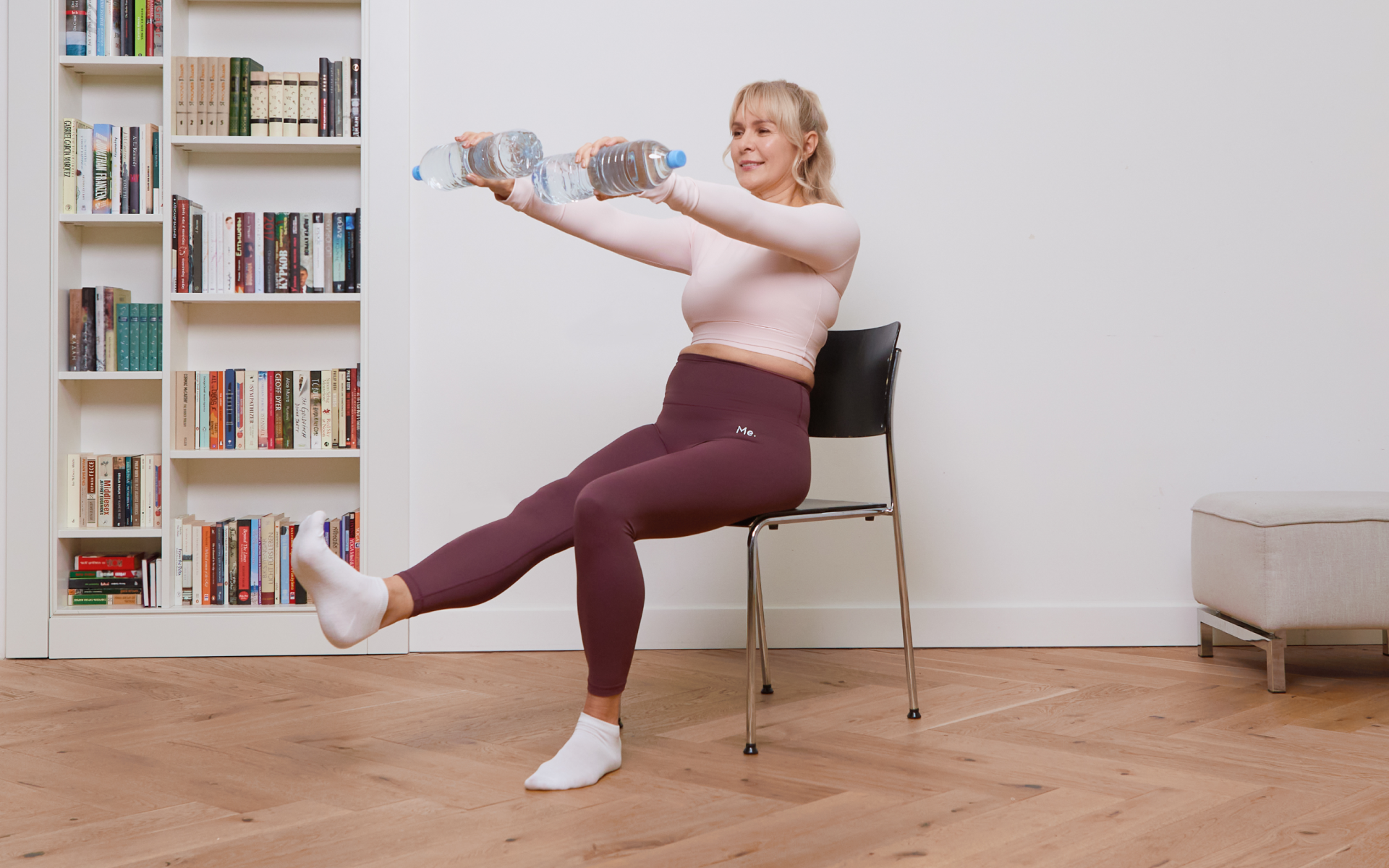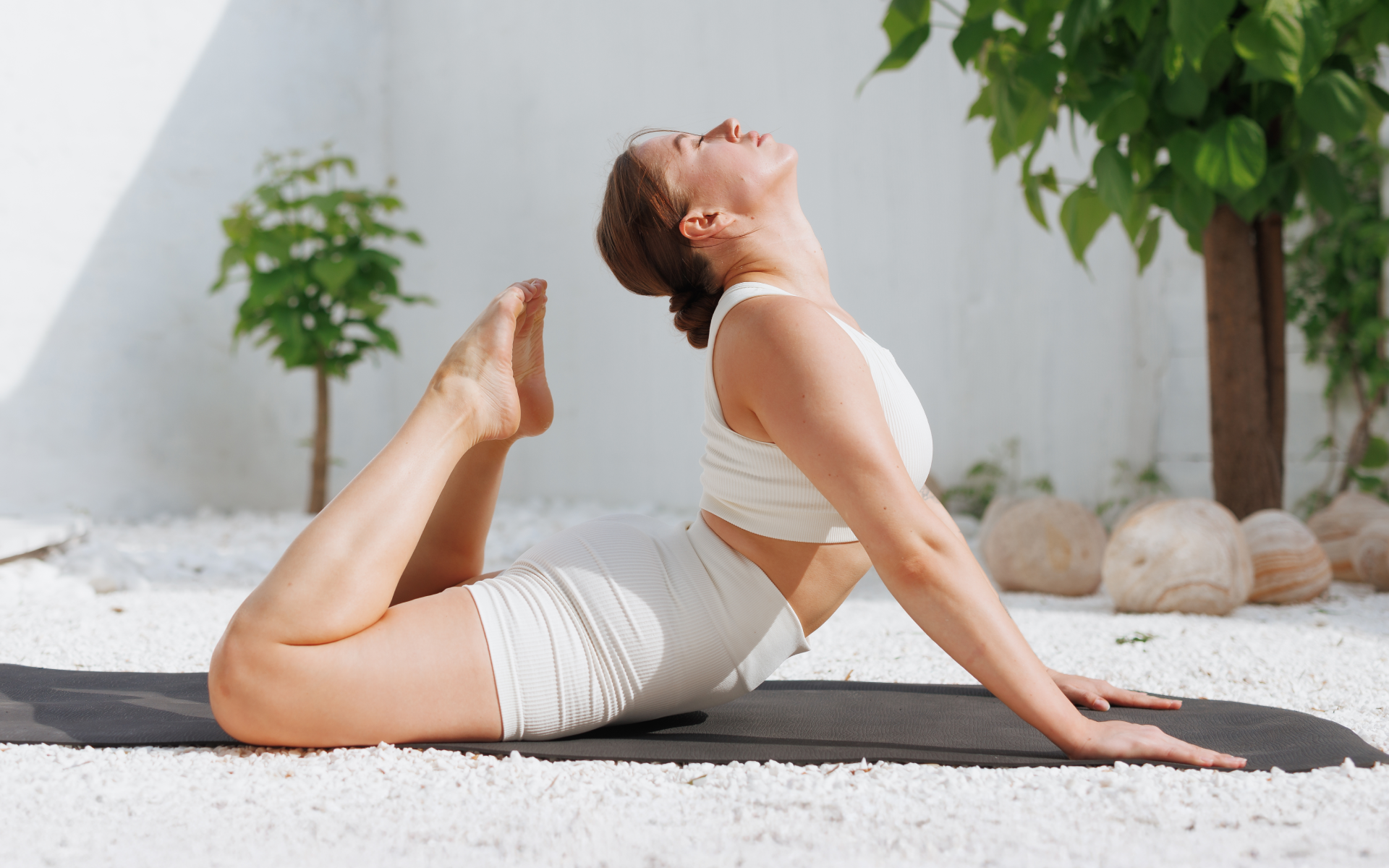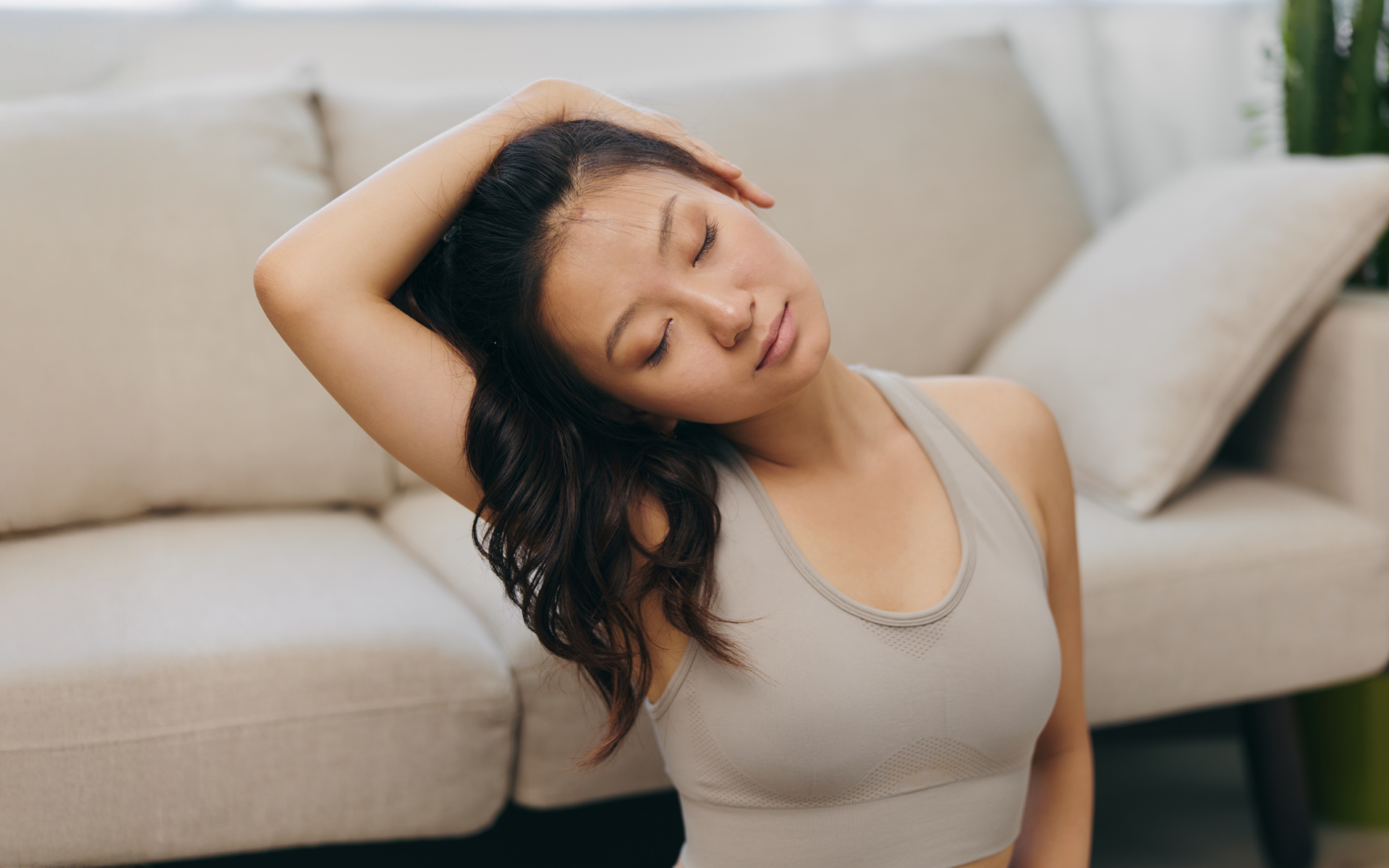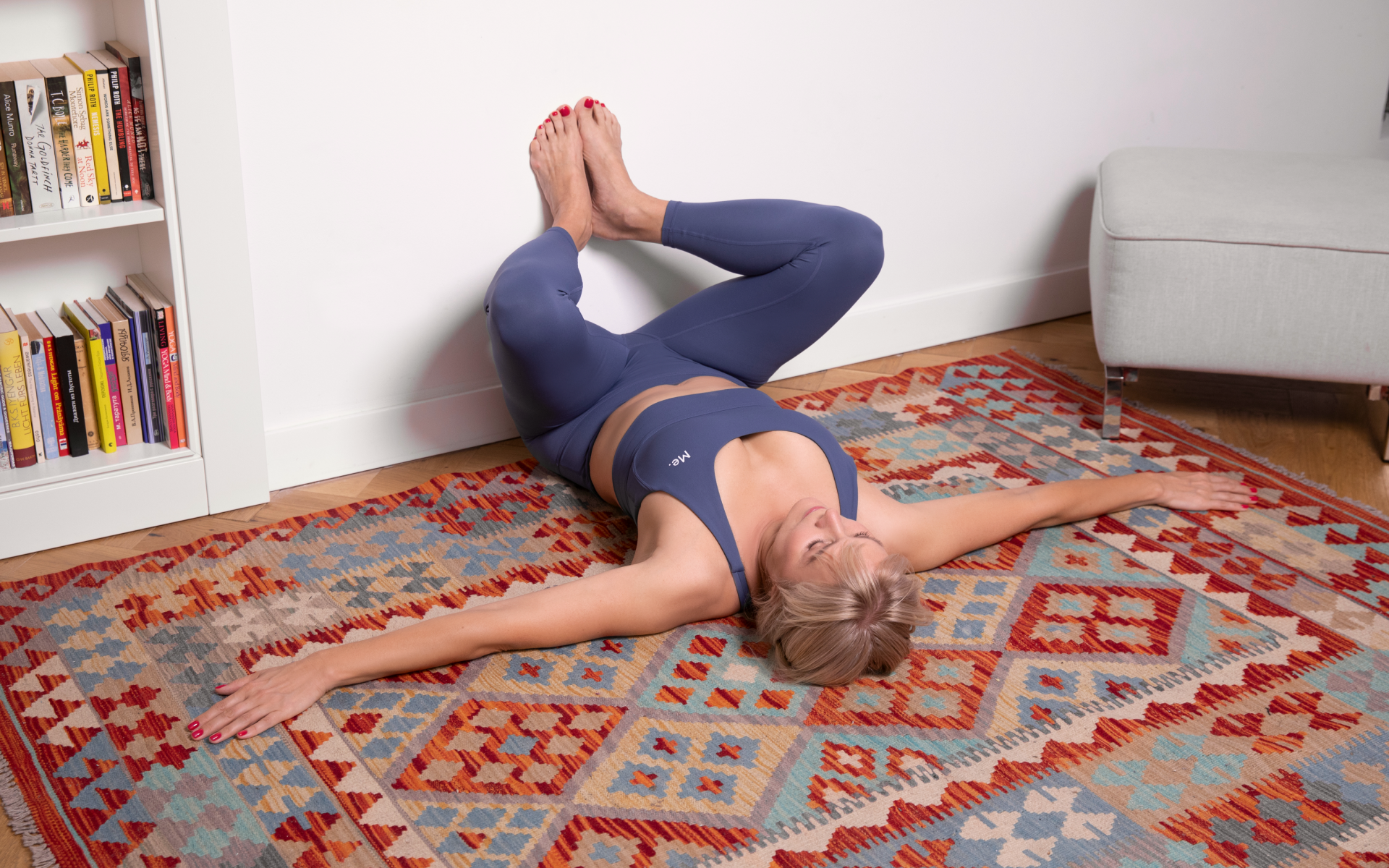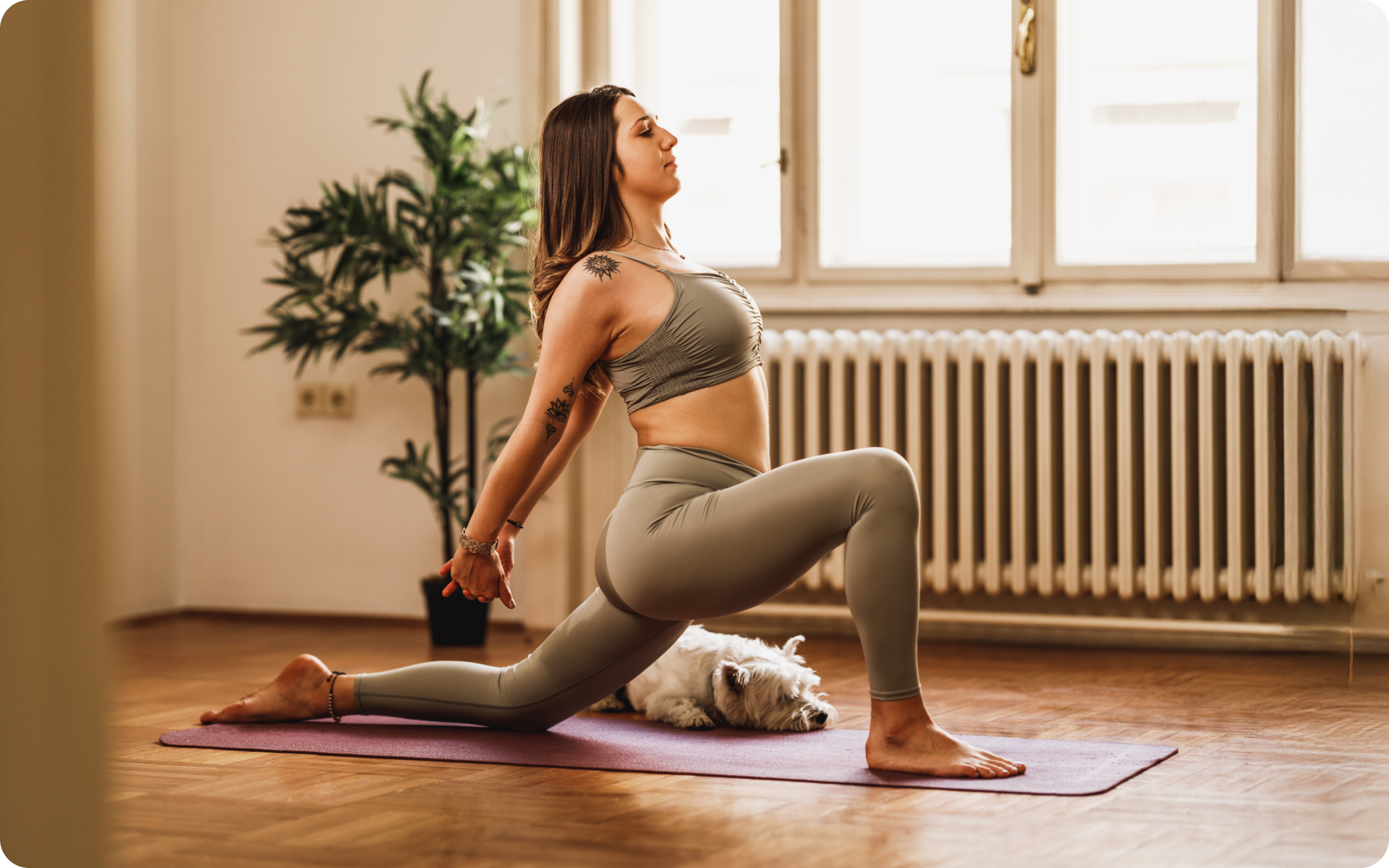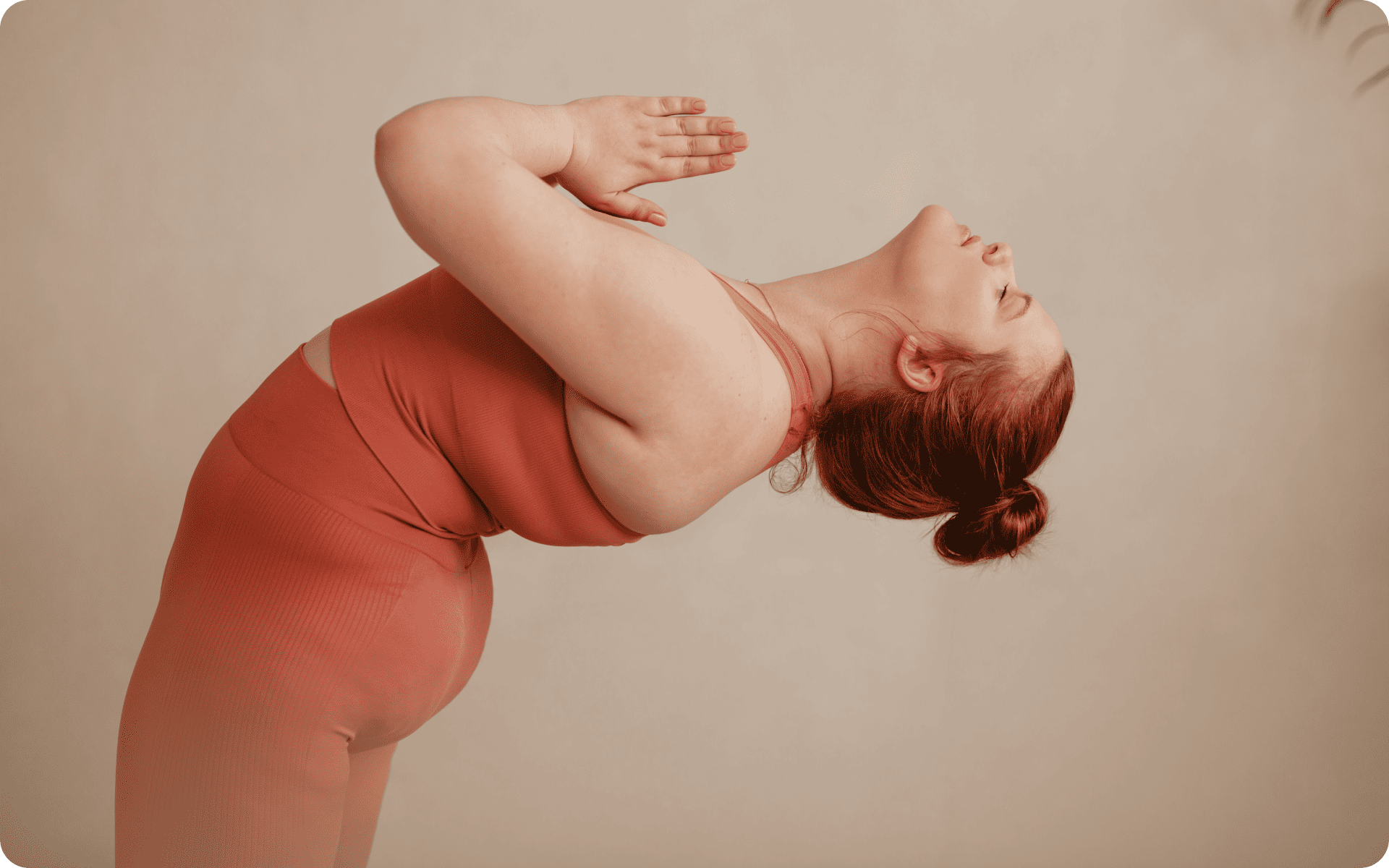Yoga is known for its many health benefits. It offers mental solace, increases flexibility, and brings spiritual peace. For seniors, yoga can be especially transformative.
It’s true even when practicing yoga for seniors at home.
Older adults can gain significant health advantages from gentle yoga for seniors.
The movements are easy to adapt to your needs. This article explores the benefits of yoga for seniors at home. It helps answer the question, “What is yoga for seniors at home best for?”
Is 70 Too Old To Start Yoga?
Many older adults wonder if starting yoga in their seventies is too late. The answer is no. Research shows seniors can benefit greatly from yoga, regardless of age (1).
Studies highlight improvements in:
- Physical function
- Mental health
- Pain management
Practices like chair yoga are beneficial. They are safe and can be adapted to meet the needs of individuals with mobility issues.
Yoga offers more than just flexibility.
It also improves (2):
- Balance
- Strength
- Mobility
These benefits can help reduce the risk of falls, a common worry among seniors.
But it’s essential to tailor yoga to individual needs to keep the practice beneficial and enjoyable.
Understanding The Benefits Of Yoga For Seniors
Practicing yoga at home for seniors creates a comfortable and stress-free environment.
Here are some key benefits:
Improves Physical Function And Lessens Pain
- Physical Health
Yoga for seniors over 60 boosts flexibility, balance, and mobility while managing pain.
People with conditions like osteoarthritis benefit from yoga stretches for seniors (7).
Yoga practice can significantly improve balance control, vital to preventing falls leading to serious injuries. A 4-week yoga program, with just 30 minutes of daily practice, has enhanced static and dynamic balance.
- Bone Health
Even yoga for senior beginners finds that the weight-bearing poses help improve bone density (3). It aids patients living with osteoporosis. That makes yoga crucial for seniors.
But you’ll want to avoid yoga stretches for seniors with spinal flexion to stay safe.
Regular yoga practice also lowers body fat while increasing muscle mass.
The workout supports overall bone strength and health.
If you wish to free yourself from all the extra pounds that have been weighing you down for way too long, start using the BetterMe: Health Coaching app and overhaul your entire life!
Mental Well-Being And Psychological Health
- Stress and Mood
Yoga for seniors at home is best for reducing stress. It also helps boost mood to enhance your overall quality of life.
Regular practice helps one:
- Foster calmness
- Improve vitality
- Lessen fatigue
- Stay happy
All contribute significantly to emotional well-being and creating a balanced mindset.
- Independence and Confidence
Even simple posture exercises for seniors in yoga improve physical ability.
These movements help support independence as you stay moving.
The empowerment gained then leads to a more active and happier lifestyle.
Regular yoga practice leads to a boost in confidence. It not only offers physical benefits, but also enhances mental aspects.
All make it a comprehensive approach to health.
Adding the practices into your daily routine allows better physical and mental health.
Social engagement through group yoga classes also creates a sense of community to alleviate feelings of loneliness. Try a live virtual yoga class for seniors at home.
Read more: Meditative Movement: How Mindfulness and Exercise Work Together
Overcoming Barriers To Yoga For Seniors
Many seniors hesitate to start yoga practice at home due to various barriers.
Common Concerns
- Fear of injury: Worries about getting hurt can deter participation.
- Lack of classes: Seniors may not know where to go to find yoga for seniors over 60.
- Cost concerns: The expense of the class may be outside one’s budget.
Solutions
- Education: Informing seniors about yoga stretches for seniors can reduce fear.
- Accessible options: Online classes and simple home routines help make yoga more accessible.
- Support: Creating a comfortable home practice setup can boost confidence.
Yoga for seniors at home promotes better health and well-being. Encouraging yoga for seniors over 60 helps engage them with its physical and mental health benefits.
It makes the golden years more vibrant.
Common Misconceptions
Regarding yoga for seniors over 60, several myths can create unnecessary barriers.
Let’s debunk these and set realistic expectations:
- Myth: Yoga is Only for the Young and Flexible
- Reality: Yoga is adaptable for all ages and levels of flexibility. Seniors can benefit from modified poses and practices like chair yoga.
These are gentle and accessible.
- Myth: Yoga is Too Physically Demanding
- Reality: Gentle yoga for seniors can be gentle and low-impact.
The focus is often on improving mobility, balance, and overall wellness, with adjustable poses to accommodate individual physical capabilities.
- Myth: You Need Experience to Start Yoga
- Reality: Beginners are welcome at any age in yoga practice.
Many classes specifically cater to senior beginners, emphasizing gradual learning and exploration of poses at a comfortable pace.
- Myth: Yoga is Only About Physical Postures
- Reality: While poses are a part of yoga, it also encompasses breathing techniques, meditation, and mindfulness, which enhance mental well-being and relaxation.
- Myth: Results From Yoga Take Too Long to Notice
- Reality: Many seniors report improved mood, better sleep, and enhanced physical comfort after beginning a consistent yoga practice.
Changes can happen gradually but are noticeable with regular practice.
- Myth: You Need Special Equipment or Attire
- Reality: Yoga requires minimal equipment. Comfortable clothing and a sturdy chair or yoga mat are often sufficient, making it accessible without a considerable investment.
- Myth: Yoga Can Be Dangerous for Seniors
- Reality: With proper guidance and attention to individual needs, yoga is a safe activity. Choosing the right class or instructor and listening to one’s body are key to reducing risks.
By dispelling these myths, seniors can confidently approach yoga and enjoy its numerous benefits, enhancing physical and mental well-being in a supportive and understanding environment.
Safety And Adaptations
Programs like “Relax into Yoga” offer modified yoga stretches for seniors to prevent injury and enhance comfort. A good rule of thumb is to keep your spine in a neutral position. Posture exercises for seniors help support good posture with chair yoga sequences.
- Recognizing Signs Of Overexertion
Knowing when your body needs a break is essential when working out as a senior.
We often misunderstand the saying, “No pain, no gain.” A bit of tiredness and discomfort is normal; actual pain is not.
Here’s how you can tell if you need to stop or change your routine (8):
- Persistent Soreness: It’s okay to feel sore after trying something new, but it’s time to pay attention if you’re sore every workout.
- Sharp Pain: You should not feel sharp pains during exercise. This kind of pain can signal that something is wrong.
- Nagging Pains: If you have ongoing pain that doesn’t go away after resting for a week or two, it’s best to see a doctor.
Ignoring these signs could lead to more serious injuries.
Consider seeing a doctor and adjusting your workouts if you notice any warning signs. Look for certified yoga trainers to ensure you stay safe. Also, remember to take care of your body.
Start with a good warmup, and include stretches and foam rolling after your workout to keep your joints flexible and prevent injuries. Eating well is also vital to support your exercise routine. Stay mindful of your body’s feelings, and make changes to exercise safely.
Which Is Better For Seniors, Pilates Or Yoga?
Pilates and yoga offer significant benefits to seniors. But their focus is different.
The best way to decide which is best for you is to think about your goals (4).
Let’s dive further.
Focus
- Pilates: Building core strength using guided movements.
- Yoga: Combines posture with a spiritual lifestyle to promote overall growth.
Practice
- Pilates: Uses equipment like resistance bands and reformer machines.
- Yoga: Brings in props like blocks and straps to help modify poses.
Class Structure
- Pilates: Follows a series of actions to build core strength.
- Yoga: It offers many styles, like Hatha or Vinyasa, with different focuses.
Mindfulness And Breathing
Both yoga and Pilates focus on breathing, mindfulness, and controlled movements.
Shared Benefits
- Core Strength: Both practices tone muscles, including abs, back, shoulders, hips, and glutes.
- Improved Posture: Helps maintain proper alignment, essential for preventing injuries and easing pain.
- Chronic Pain Relief: Aid in managing pain, especially in the lower back.
- Flexibility and Mobility: Improve flexibility and range of motion.
- Mindfulness: Use breathwork to enhance mental well-being and relieve stress.
Which Is Better?
To decide, think about your goals. Yoga is ideal if you’re looking for stress relief and relaxation. But if you want to get stronger and recover from an injury, Pilates is a better fit. Try both and see which feels the best to you. Always speak with your doctor before starting a new workout.
Read more: Pilates For Older Women: Benefits And How To Get Started
Which Yoga Is Best For Senior Beginners?
Chair yoga for seniors benefits everyone, even beginners. It allows those with mobility issues to enjoy yoga safely. Sessions incorporate yoga stretches for seniors that build strength and improve flexibility. These benefits make the yoga practice a popular choice for posture exercises for seniors.
What Are The Steps To Chair Yoga For Seniors?
Chair yoga sequences allow seniors to enjoy yoga without the need to stand or get down on the floor.
Here’s a simple chair yoga routine for seniors to get started (5):
Seated Cat-Cow:
- Sit with your feet apart
- Arch your back and look up.
- Round your back and tuck your chin.
- Do this for five breaths.
Chair Side Stretch:
- Reach your right arm overhead to the left
- Using your left hand for support
- Hold this for 3 breaths.
- Switch to the other side.
Chair Twist:
- Sit sideways and twist to the right while holding the chair.
- Keep your knees aligned.
- Hold for 3 breaths, then switch sides.
Chair Forward Fold:
- Bend forward, letting your arms hang and your chin drop.
- Hold the position for 3 breaths.
- Roll up slowly.
Chair Downward Dog:
- Stand, place your hands on the chair, and bend from your hips.
- Hold for 3 breaths to stretch your back.
Chair Eagle:
- Cross your legs and wrap your arms with palms touching.
- Lift your elbows without raising your shoulders.
- Hold for 3 breaths, then switch sides.
Chair Warrior II:
- Sit sideways, extend one leg back, and raise your arms at shoulder height.
- Look forward, hold for 3 breaths, then switch sides.
Chair Reverse Warrior:
- From the Warrior II pose
- Raise one arm and let the other rest down.
- Hold for 3 breaths, then switch sides.
Chair Pigeon:
- Cross one ankle over the opposite thigh, and lean forward gently.
- Hold for 3 breaths, then switch sides.
Chair Savasana:
- Sit back
- Relax your arms by your sides and close your eyes.
- Take 5 calm breaths to finish.
What Chair Yoga Exercises Are The Best For Seniors?
The best chair yoga for seniors benefits people of all ages.
However, seniors will want to focus on simplicity and flexibility. The ideal chair yoga sequences are actions like (6):
- Seated twists: Work to improve spinal and gut health.
- Leg lifts: Strengthens the legs and improves blood flow.
- Balance and core movements: Yoga stretches enhance balance and build core strength for seniors.
Repeating these movements can help improve physical health and reduce fall risks.
The BetterMe: Health Coaching app will provide you with a host of fat-frying fitness routines that’ll scare the extra pounds away and turn your body into a masterpiece! Get your life moving in the right direction with BetterMe!
What Chair Yoga Poses Should Seniors Avoid?
Yoga stretches for seniors to avoid include certain poses:
- Extreme bending
- Unsupported posture changes
- Unstable chair yoga sequences
Yoga for seniors at home should focus on movements that offer stability.
Then, you can slowly build your flexibility through adapting your routine.
How To Make An Easy Chair Yoga For Seniors At Home Routine
Making a chair yoga routine at home is simple and rewarding.
Here’s how you can get started with a chair yoga routine:
- Keep It Consistent: Aim to practice regularly, 2-3 times a week.
Consistency helps your body adjust and reap the full benefits over time.
- Start Small: Begin with short sessions, around 15-30 minutes.
These shorter time frames make fitting into your day easier and keep the practice manageable.
- Explore Simple Poses: Focus on easy chair yoga poses, like seated twists and gentle stretches. These are great for beginners and help improve flexibility and strength without overwhelming you.
- Listen to Your Body: It’s essential to pay attention to how your body feels.
If any movement causes discomfort, stop and rest. Progress at your own pace and don’t push too hard.
- Set Up a Relaxing Space: Find a quiet, comfortable spot at home where you can place a sturdy chair. Having a designated yoga space helps you focus and relax.
- Use Props if Needed: Feel free to use yoga blocks, straps, or pillows for extra support. These can make poses easier and safer.
- Stay Hydrated and Relaxed: Keep a bottle of water nearby and remember to breathe deeply. Relax and enjoy the moment. Yoga is as much about calming the mind as it is about moving the body.
By following these tips and enjoying each session, you can create a rewarding chair yoga routine that suits your lifestyle and benefits your health.
How Often Should Seniors Do Chair Yoga?
Practicing chair yoga around 2-3 times weekly is the recommended amount.
This frequency makes you more likely to see improvements in balance, strength, and mental clarity. Consistency is key to feeling better longer.
No. While it’s easily changed for seniors, chair yoga benefits anyone seeking a gentler exercise routine. Hot yoga poses risks to seniors. How well we regulate our body temperature lessens with age. The higher temperatures increase one’s risk of dehydration. It depends on your preference. Morning yoga can energize. But evening sessions can help you relax before bedtime. There’s no specific posture that can stop the aging process. But gentle yoga for seniors can help restore the body by improving flexibility and lowering stress. Frequently Asked Questions
Is chair yoga for seniors only?
Is hot yoga good for seniors?
Is yoga better in the morning or evening?
Which posture removes old age in yoga?
The Bottom Line
Yoga at home is excellent for seniors, offering health boosts, better balance, and clearer minds. Seniors can enhance their quality of life by adapting poses to personal needs and focusing on gentle exercises. This blend of activity and relaxation makes yoga perfect for enjoying the golden years.
DISCLAIMER:
This article is intended for general informational purposes only and does not serve to address individual circumstances. It is not a substitute for professional advice or help and should not be relied on for making any kind of decision-making. Any action taken as a direct or indirect result of the information in this article is entirely at your own risk and is your sole responsibility.
BetterMe, its content staff, and its medical advisors accept no responsibility for inaccuracies, errors, misstatements, inconsistencies, or omissions and specifically disclaim any liability, loss or risk, personal, professional or otherwise, which may be incurred as a consequence, directly or indirectly, of the use and/or application of any content.
You should always seek the advice of your physician or other qualified health provider with any questions you may have regarding a medical condition or your specific situation. Never disregard professional medical advice or delay seeking it because of BetterMe content. If you suspect or think you may have a medical emergency, call your doctor.
SOURCES:
- Take a Seat for Yoga with Seniors: A Scoping Review (2022, lidsen.com)
- Yoga for Seniors: Understanding Their Beliefs and Barriers to Participation (2020, tandfonline.com)
- Relax into Yoga for Seniors: An Evidence-Informed Update for Enhancing Yoga Practice Benefits by Reducing the Risk in a Uniquely Vulnerable Age Group (2020, lidsen.com)
- Yoga vs. Pilates: The Difference Between Two Great Exercises: (2024, health.clevelandclinic.org)
- 10 Chair Yoga Poses You Can Do Sitting Down (2024, today.com)
- Balance Improving in Female Seniors 65+ After Completing Short Term Intervention Program Based on Yoga Exercises (2022, pmc.ncbi.nlm.nih.gov)
- Yoga Exercises Intervention Improves Balance Control and Prevents Falls in Seniors Aged 65+ (2022, pmc.ncbi.nlm.nih.gov)
- Know Your Body’s Signs of Overexertion During a Workout (2023, health.osu.edu)
